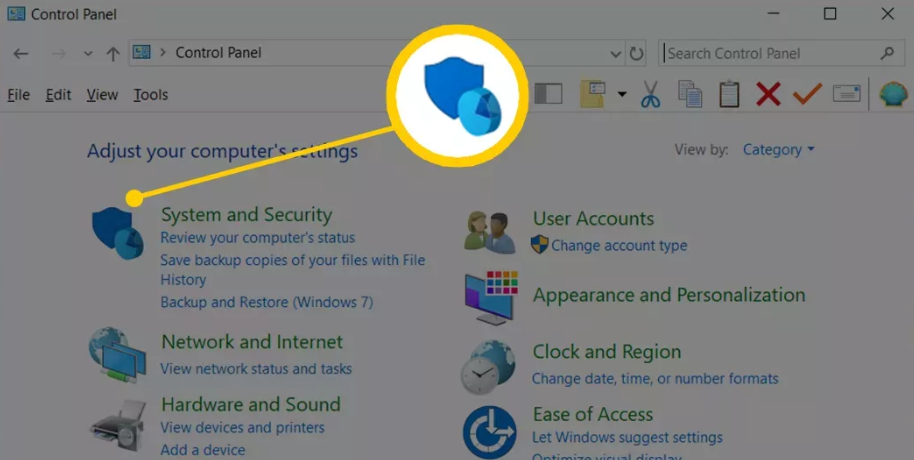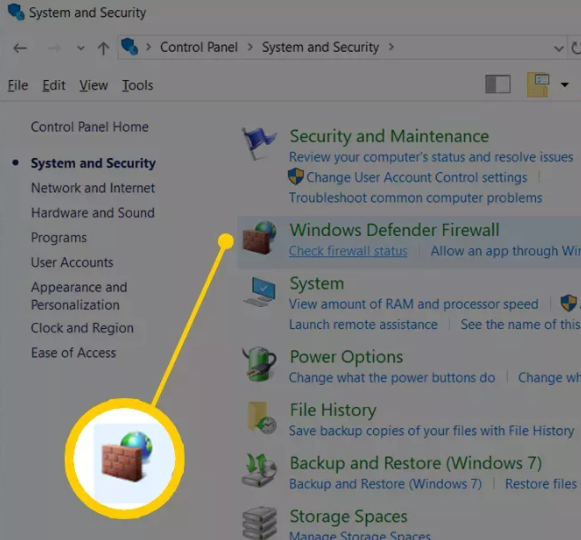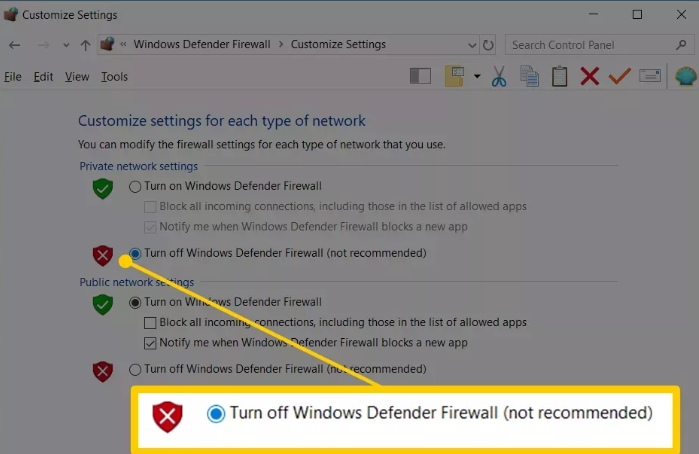Guide
How to Disable the Windows Firewall in Windows

The Windows Firewall prevents unauthorized users from accessing your computer’s data and other resources by acting as a barrier between them. Nevertheless, the Windows Firewall may at times do more harm than good, particularly if there is already another firewall program—whether paid or free—installed on the computer. Turning down the Windows Firewall is a simple process that should not take more than ten minutes of your time.
Read Also: How to Show File Extensions in Windows 10 and 11
How to Disable the Windows Firewall in Windows 10, 8, 7
In Windows 7, 8, and 10, disabling the Windows Firewall can be accomplished using much the same series of actions.
1. Open Control Panel.
There are a few different approaches you can take to accomplish this, but the simplest one is to either search for it or choose it from the Start menu in Windows 7.

2. Make your selections under System and Security.

3. Select the Windows Firewall option.

4. On the left side of the screen, select either the Turn Windows Firewall on or off option.

5. To disable the Windows Firewall, select the checkbox that appears next to it (not recommended).

6. To save the changes, select the OK button.
Now that the firewall has been disabled, you should go back through the processes that lead up to the issue and check to see if turning off this option has resolved the problem.
FAQS
Can I disable Windows Firewall service?
To turn Windows Defender on or off, click the link located on the left-hand side of the screen. On the page labelled “Customize Settings,” you will see an option that allows you to turn off the Windows firewall for each individual network profile. In the following illustration, the Windows Firewall has been disabled across all of the network profiles.
Is it safe to turn off firewall?
If a firm disables its firewall, it leaves itself open to the possibility of being exploited, opens the door for malicious code to be remotely executed by hackers, and exposes the company to the risk of viruses infecting other connected devices.
What happens if you stop Windows Firewall service?
Microsoft does not recommend disabling the Windows Firewall service in any circumstance. If you disable it, not only will the firewall stop working, but you will also break IPsec, connection security rules, and a great deal of other network-based security features.
Should my Windows Firewall be on or off?
You should not turn off Windows Firewall if you have another firewall actively protecting your computer. If you disable the Windows Firewall on your computer, it could leave your system (and your network, if you have one) more open to attack from malicious software like worms or hackers.
Is it better to have firewall on or off?
The most modern firewalls for PCs and Macs check each packet in microseconds, which allows them to have very little of a negative impact on the system’s speed or resources. Because turning them off won’t provide you with any meaningful benefit, it is preferable to leave them on so that you have that additional layer of security.
What happens if no firewall?
Inaccessibility of the Network If you don’t have a firewall, you run the risk of your entire network going down, which is one of the worst-case scenarios you may face. Criminals with malevolent intent might effectively bring your company to a halt if you do not have proper protection. In addition, this may do irreparable harm to your company.


















